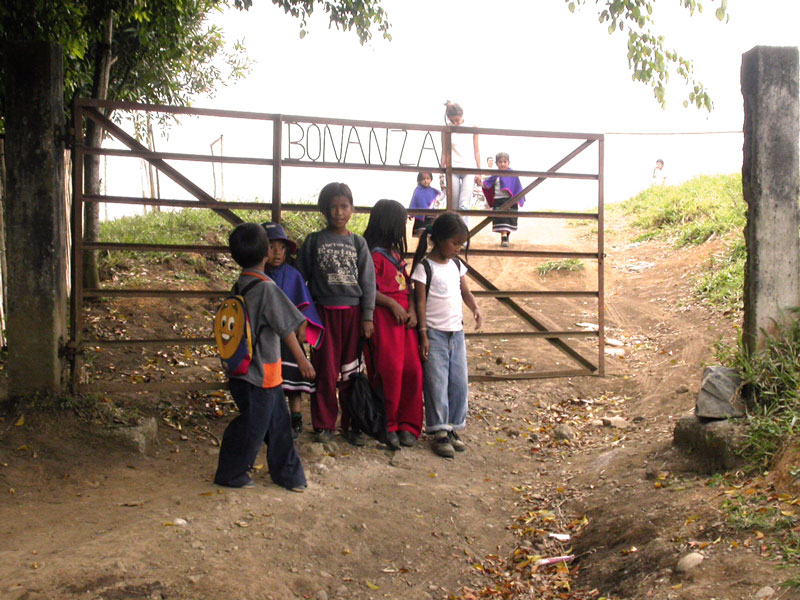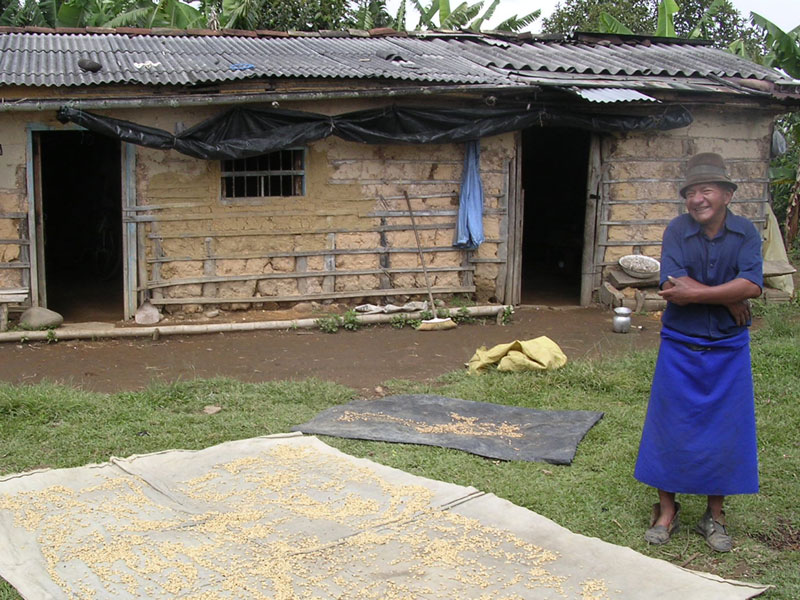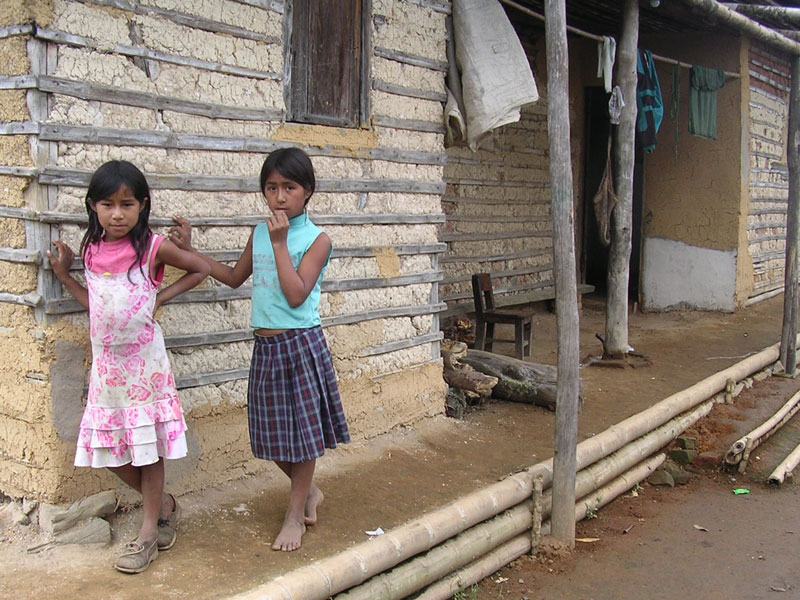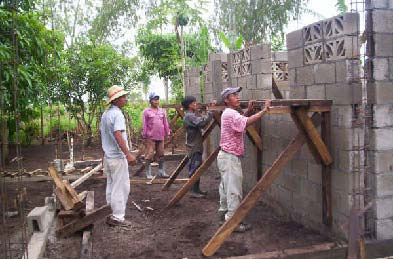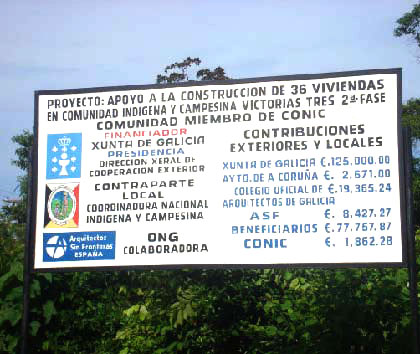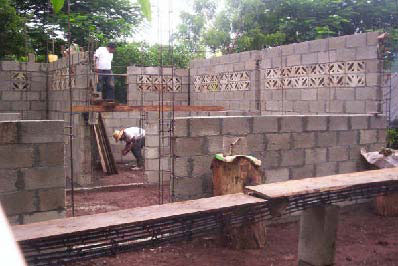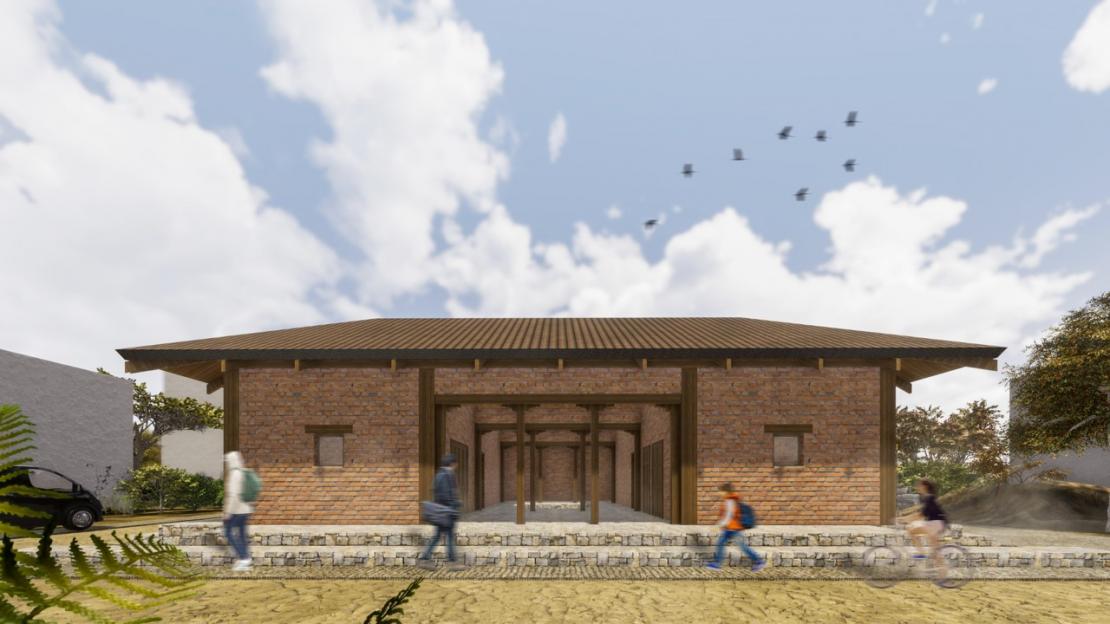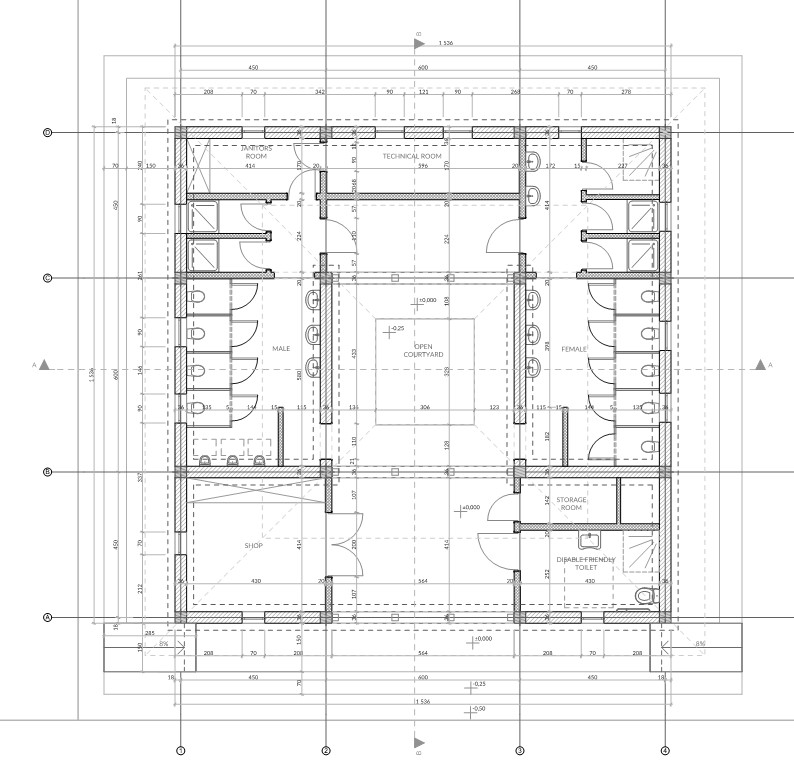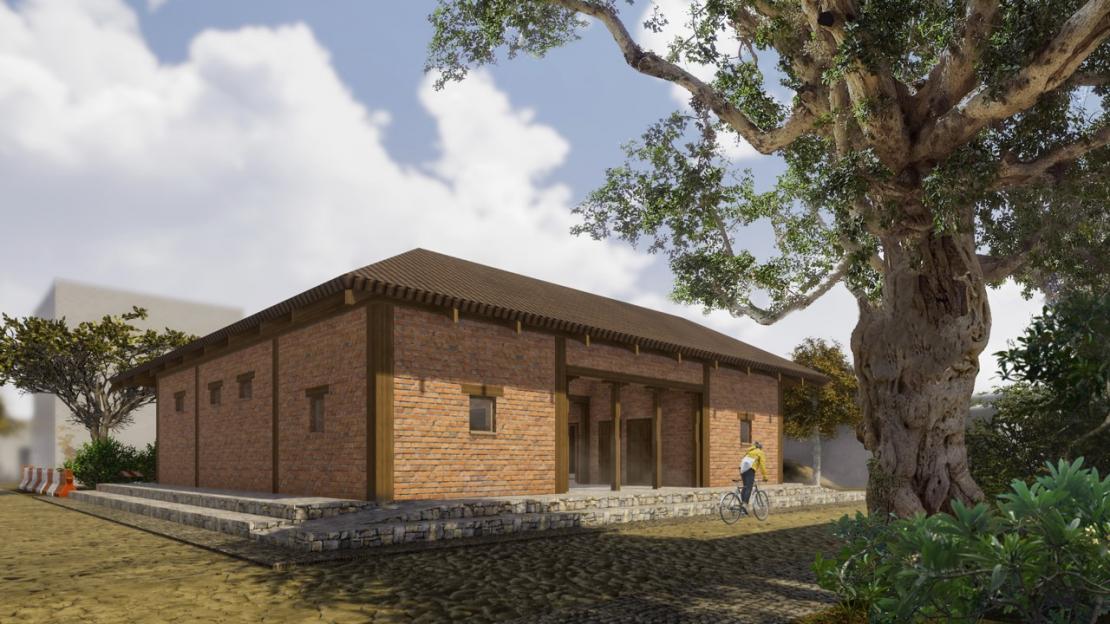Building the Guambian Community
Social development and settlement improval
At MORALES in Colombia
In 2007By Architetti Senza Frontiere Italia
Local partners: Fundacion Horizonte of the socialgroup Asmet Salud

The project has the purpose of contributing to the reinforcement of the social, ethnic and cultural background of the “Guambian” native community of the “Cabildo La Bonanza” by means of the improvement of its habitat, that is to say the living, hygienic, sanitary conditions and infrastructures. Beneficiaries are composed of 205 Guambian families coming from Resguardo of Guambia Silvia and compelled, since 1930, to move into the east part of Morales Municipality for the lack of lands to live on. The Community faced the difficulties coming from settling in a new land, with the risk of loosing its own identity as a native ancestral community.
Gambian Community asked for support in the reinforcement and improvement of its settlement, as well as in the process of social and cultural development. According to this request, ASF Onlus elaborated the following project in cooperation with the local community:
a) improvement of the present hygienic, sanitary, living conditions and infrastructure, necessary to guarantee the available habitat for the community. For this purpose, the project will provide to the building of 20 houses for 20 families together with the basic infrastructures linked to them, in status of “auto-costruzione”;
b) creation of a laboratory for the manufacturing of “guadua” (a kind of material similar to bamboo) and of wood, useful for the houses’ construction;
c) promotion of training activities in communitary organization, leadership, building activities, manufacturing, creation of small factories, with the aim of strengthening the communitary organization and starting up productive activities in favour of the whole community.
The project aims to make all the people involved (target group and local partners) able to develop their own technical and organization abilities by means of a communitary, synergic partecipation between the whole native population and the target group. Thus the project aims to contribute in making it easier to begin a sustainable development process.
